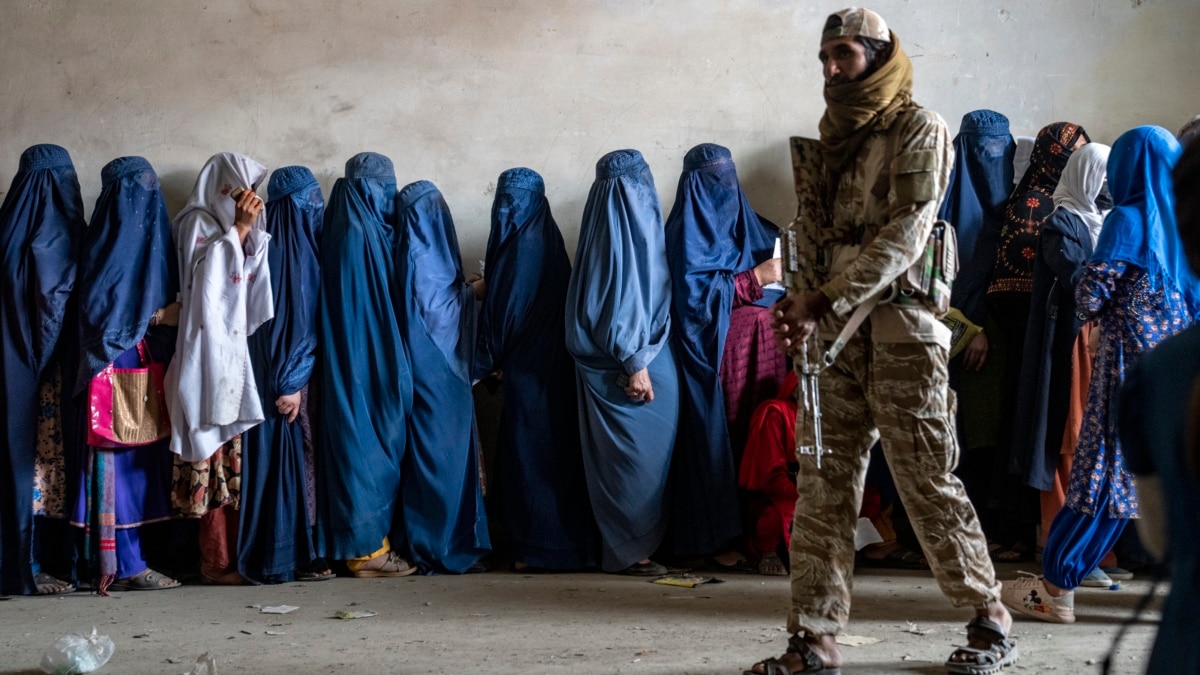US Body Reports ‘Horrific Information’ About UN Operations in Afghanistan
US Body Reports 'Horrific Information' About UN Operations in Afghanistan Voice of America - VOA News


A U.S. Watchdog Discloses Information about Diversion of Humanitarian Assistance in Afghanistan

Introduction
A U.S. watchdog says it has disclosed to Congress information about diversion and control of international humanitarian assistance by de facto Taliban authorities in Afghanistan.
Findings by SIGAR
“We have just uncovered, as part of our response to the House Foreign Relations Committee, some really horrific information about the problems with the U.N. operations in Afghanistan,” John Sopko, Special Inspector General for Afghanistan Reconstruction (SIGAR), told an event at King’s College London on Thursday.
Sopko did not offer more details about his findings saying the foreign relations committee had tasked SIGAR to investigate and report to it whether U.S. aid to Afghanistan benefited the Taliban.
Concerns and Dilemma
“A lot of congressmen are torn in this conundrum between giving humanitarian assistance to Afghans who are suffering versus how much of that [aid] is going to a regime which we hate,” said Sopko.
Response from United Nations
United Nations officials have not yet responded to VOA questions sent Thursday about what they know about diverted aid.
Taliban’s Sanctions and Denial
The Taliban are under U.S. sanctions that date back decades when the group was first in power over much of Afghanistan in the 1990s.
The Taliban deny they are interfering in humanitarian programs and accuse the U.S. and other Western donors of politicizing aid to Afghanistan.
Gender-Based Restrictions and Interference
However, the Islamist regime has imposed gender-based restrictions on aid activities denying Afghan women’s work for the U.N. and other non-government organizations – a move globally condemned as misogynistic.
Meanwhile, the U.N. says there continue to be many incidents of interference involving U.N. aid workers.
“118 gender-related incidents were recorded, with some 97 percent attributed to the de facto authorities and involving, inter alia, interference with programming, incidents at checkpoints, threats against humanitarian workers, assets and facilities, and mahrams [male escorts] required for movement of female staff,” the U.N. Special Representative for Afghanistan reported to the Security Council last month.
Funding and Appeal
The United States, even while enforcing sanctions on the Taliban, has maintained humanitarian funding to Afghanistan amounting to about $2 billion since August 2021.
Despite a reported drop in donors’ response to the U.N. humanitarian appeal for Afghanistan, the United States remains at the top of the donors’ list with over $336 million contribution so far this year. Last year, the United States contributed over $1.26 billion to the U.N. appeal.
As of July 20, only 23% of this year’s Afghanistan appeal has been funded, according to the U.N.
Aid agencies have warned that a lack of funding to the appeal will force millions of vulnerable Afghan households into extreme poverty.
Comparison with Other Countries
Citing North Korea and Syria, among other countries, John Sopko said in the past “we in the United States held our nose and delivered assistance to people around the world who live under governments we hate.”
Last month, the U.S. Department of States announced an additional $920 million in humanitarian assistance for the people of Syria taking the total U.S. assistance to the country since 2011 to $16.8 billion.
Proposed Draft Law and Implications
SIGAR said a new proposed draft law, which was passed by the House and under consideration by the Senate, will prohibit any U.S. assistance going “directly or indirectly” to the Taliban. Sopko predicted the bill, if passed, would have “serious implications” for aid to Afghanistan.
SDGs, Targets, and Indicators in the Article
1. Which SDGs are addressed or connected to the issues highlighted in the article?
- SDG 1: No Poverty
- SDG 2: Zero Hunger
- SDG 3: Good Health and Well-being
- SDG 5: Gender Equality
- SDG 16: Peace, Justice, and Strong Institutions
- SDG 17: Partnerships for the Goals
2. What specific targets under those SDGs can be identified based on the article’s content?
- Target 1.1: By 2030, eradicate extreme poverty for all people everywhere.
- Target 2.1: By 2030, end hunger and ensure access by all people, in particular the poor and people in vulnerable situations, including infants, to safe, nutritious, and sufficient food all year round.
- Target 3.8: Achieve universal health coverage, including financial risk protection, access to quality essential health-care services, and access to safe, effective, quality, and affordable essential medicines and vaccines for all.
- Target 5.1: End all forms of discrimination against all women and girls everywhere.
- Target 16.6: Develop effective, accountable, and transparent institutions at all levels.
- Target 17.16: Enhance the global partnership for sustainable development, complemented by multi-stakeholder partnerships that mobilize and share knowledge, expertise, technology, and financial resources.
3. Are there any indicators mentioned or implied in the article that can be used to measure progress towards the identified targets?
- Indicator 1.1.1: Proportion of the population living below the international poverty line, by sex, age, employment status, and geographical location.
- Indicator 2.1.1: Prevalence of undernourishment.
- Indicator 3.8.1: Coverage of essential health services (defined as the average coverage of essential services based on tracer interventions that include reproductive, maternal, newborn, and child health, infectious diseases, non-communicable diseases, and service capacity and access).
- Indicator 5.1.1: Whether or not legal frameworks are in place to promote, enforce, and monitor equality and non-discrimination on the basis of sex.
- Indicator 16.6.2: Proportion of the population satisfied with their last experience of public services.
- Indicator 17.16.1: Number of countries reporting progress in multi-stakeholder development effectiveness monitoring frameworks that support the achievement of the sustainable development goals.
Table: SDGs, Targets, and Indicators
| SDGs | Targets | Indicators |
|---|---|---|
| SDG 1: No Poverty | Target 1.1: By 2030, eradicate extreme poverty for all people everywhere. | Indicator 1.1.1: Proportion of the population living below the international poverty line, by sex, age, employment status, and geographical location. |
| SDG 2: Zero Hunger | Target 2.1: By 2030, end hunger and ensure access by all people, in particular the poor and people in vulnerable situations, including infants, to safe, nutritious, and sufficient food all year round. | Indicator 2.1.1: Prevalence of undernourishment. |
| SDG 3: Good Health and Well-being | Target 3.8: Achieve universal health coverage, including financial risk protection, access to quality essential health-care services, and access to safe, effective, quality, and affordable essential medicines and vaccines for all. | Indicator 3.8.1: Coverage of essential health services (defined as the average coverage of essential services based on tracer interventions that include reproductive, maternal, newborn, and child health, infectious diseases, non-communicable diseases, and service capacity and access). |
| SDG 5: Gender Equality | Target 5.1: End all forms of discrimination against all women and girls everywhere. | Indicator 5.1.1: Whether or not legal frameworks are in place to promote, enforce, and monitor equality and non-discrimination on the basis of sex. |
| SDG 16: Peace, Justice, and Strong Institutions | Target 16.6: Develop effective, accountable, and transparent institutions at all levels. | Indicator 16.6.2: Proportion of the population satisfied with their last experience of public services. |
| SDG 17: Partnerships for the Goals | Target 17.16: Enhance the global partnership for sustainable development, complemented by multi-stakeholder partnerships that mobilize and share knowledge, expertise, technology, and financial resources. | Indicator 17.16.1: Number of countries reporting progress in multi-stakeholder development effectiveness monitoring frameworks that support the achievement of the sustainable development goals. |
Behold! This splendid article springs forth from the wellspring of knowledge, shaped by a wondrous proprietary AI technology that delved into a vast ocean of data, illuminating the path towards the Sustainable Development Goals. Remember that all rights are reserved by SDG Investors LLC, empowering us to champion progress together.
Source: voanews.com

Join us, as fellow seekers of change, on a transformative journey at https://sdgtalks.ai/welcome, where you can become a member and actively contribute to shaping a brighter future.







